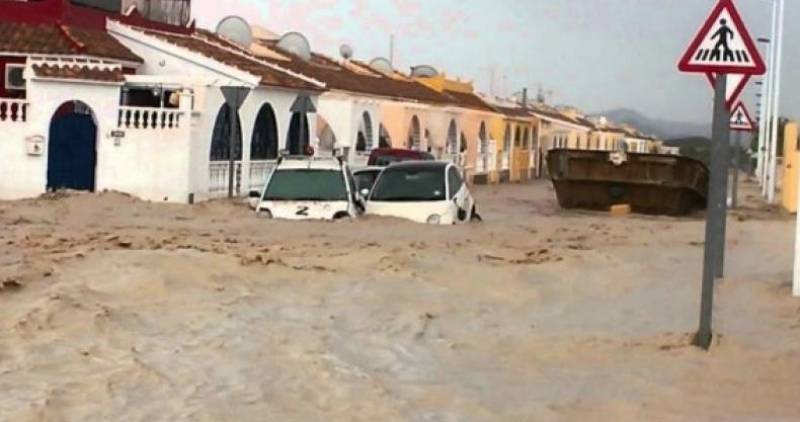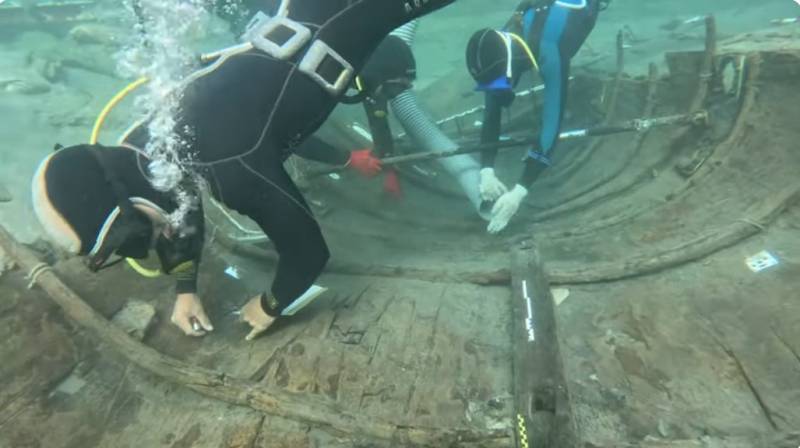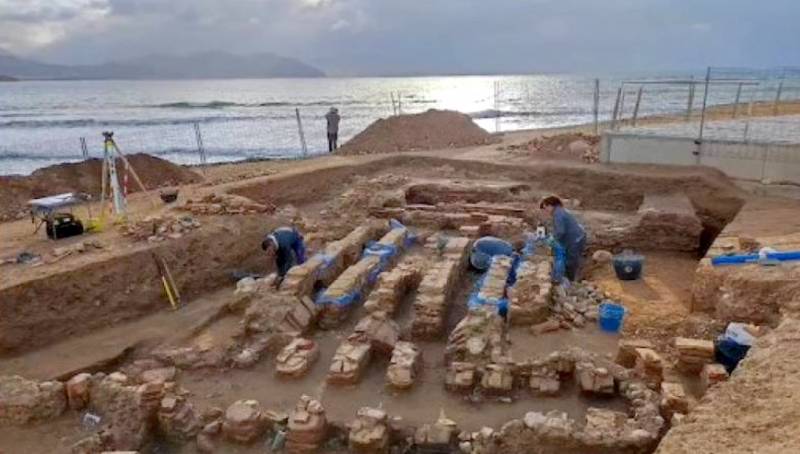

Guidelines for submitting articles to Los Alcazares Today
Hello, and thank you for choosing Los Alcazares.Today to publicise your organisation’s info or event.
Los Alcazares Today is a website set up by Murcia Today specifically for residents of the urbanisation in Southwest Murcia, providing news and information on what’s happening in the local area, which is the largest English-speaking expat area in the Region of Murcia.
When submitting text to be included on Los Alcazares Today, please abide by the following guidelines so we can upload your article as swiftly as possible:
Send an email to editor@spaintodayonline.com or contact@murciatoday.com
Attach the information in a Word Document or Google Doc
Include all relevant points, including:
Who is the organisation running the event?
Where is it happening?
When?
How much does it cost?
Is it necessary to book beforehand, or can people just show up on the day?
…but try not to exceed 300 words
Also attach a photo to illustrate your article, no more than 100kb

Interview with Mayor of Mazarron Ginés Campillo
Camposol, Pheonician boats, promenades, the panoramic lift, road improvements and the efforts to increase tourism and the standard of living in Mazarrón
 It is now just over 18 months since local elections were held all over Spain and in the case of Mazarrón this resulted in the election as Mayor until the spring of 2027 of Ginés Campillo.
It is now just over 18 months since local elections were held all over Spain and in the case of Mazarrón this resulted in the election as Mayor until the spring of 2027 of Ginés Campillo.
Sr Campillo represents none of the mainstream national political parties, instead leading the local UIDM (Unión Independiente De Mazarrón) group. He is a true “mazarronero” and among his priorities is the importance of of the identity of the town and municipality, an idea which has been central to the policies he prioritizes as he leads the town council into what he trusts will be an even brighter future.
On 29th November, the Mayor was kind enough to spend a little of his time with a member of the editorial team at Murcia Today, Mazarrón Today and Camposol Today, explaining his views on various topics which are certain to be of interest to the large international community in Mazarrón, where native Spaniards live alongside sizeable populations of South American and northern European natives. What follows is a summary of some of the information he provided and the insights he gave into the exciting challenges that lie ahead for Mazarrón.
Murcia Today: Good morning. It will be no surprise to hear that the first topic we would like to ask about is the Camposol development, but before going on to the “adoption” of the urbanization by the Town Hall we have seen that according to an official press release that an “important step forward” has been taken with regard to the flood-prone Rambla de los Aznares which currently runs through the area. Would you care to explain what that development is?
Ginés Campillo: Certainly. We at the Town Hall have been working on the draft project to divert the course of the Rambla around the edge of Camposol (option 4 as identified by the round table group addressing the problem), and when that draft is complete the CHS [the water infrastructures authority in the Segura basin] has agreed to take on responsibility for the work which will make this a reality.
 MT: And when is that likely to happen?
MT: And when is that likely to happen?
GC: We hope to have the draft project completed in approximately 6 months, after which the timescale for the necessary work will be decided on by the CHS.
MT: Are the Camposol Residents’ Association and the regional government involved?
GC: Not in this phase of the planning, no. Town Hall and CHS technicians are working together to ensure that they are in agreement on the details of the project, and when this is finalized a meeting of the “Camposol Round Table” (including residents’ associations and the regional government) will be called to present the project.
MT: Now, with regard to the adoption of Camposol by the Town Hall, this year a program of official notifications to homeowners and residents has been ongoing. How is that notification process going?
GC: We are still on target to complete the notification process by the end of this year and believe that this remains a feasible objective. I have reviewed the progress made in the last couple of weeks and our forecast is that at some point in December the process will be complete.
MT: And after that, given the scale of the work needed to “complete” the urbanization satisfactorily, how long will the complete “takeover” take? Some have floated a timescale of 12 years…
GC: I don’t know how the figure of 12 years has been arrived at. At the Town Hall the simple answer to the question is that we don’t know, but a lot depends on how much of the work can be financed by the cashing in of the 3 million euros in bank guarantees regarding the original developers.
There are ways to use those funds for certain elements of the work, but exactly how much those elements will cost and exactly which ones are eligible has not yet been ascertained with certainty. For example, to “finish” the urbanization the bank guarantees can be used, but it is not yet clear whether it will be legally possible for this to include aspects such as the repairs needed to the bridge in Camposol.
At some point it may be necessary to raise “contributions” from owners in Camposol, but again no decisions can yet be made regarding how much these contributions might amount to.
On the other hand, amounts could be set aside in the annual budget of the Town Hall, but at the same time, until an accurate works costing budget has been compiled, aspects such as there remain open to conjecture.
MT: In the meantime, mention has also made in recent meetings of the “Junta de Gobierno” (the governing body of the Town Hall) of building licences being granted to additional building projects in Camposol – for example, one for 23 homes in Polígono D-25. Have these proposals been approved? Was there not an embargo on future construction issued in 2016?
GC: That embargo was for a duration of, I believe, 5 years, and as progress has been made on the new “Plan Parcial” the suspension has now been lifted. However, for each proposal it is necessary to evaluate whether the planned construction falls within the established building limits on any given Polígono.
MT: So further construction projects could be approved in the same way?
GC: Yes. It has to be understood that to reach this point a lot of work has been put in by Town Hall staff to establish that the original “buildability” of the development had not been used up, and it is as a result of this effort that licences can now be granted.
MT: OK, now let’s move away from Camposol and talk about roads. The Town Hall has embarked on a major overhaul of urban roads and streets throughout the municipality under the name of “Mazarrón Urbano” – are there any overall estimates of how much the whole procedure will cost, and when it will be complete?
GC: In some ways, this is similar to the adoption of Camposol in that the exact budget and timeframe cannot be decided as yet. One of the reasons for this is that we are working in collaboration with Aqualia (the water supply company), who are renovating the urban supply and sewage network in numerous locations, and it is clearly better to coordinate our road improvement plans with their work under the ground.
In addition, of course, decisions have not yet been made regarding the amounts available from the municipal budget each year.
MT: And will the work carried out by Aqualia contribute to alleviating the problem of flooding in the Bahía district of Puerto de Mazarrón?
GC: I believe it will, because one of the aspects of the problem to be addressed concerns a rambla (floodwater runoff channel) which used to run into the Rambla de las Moreras but was blocked some years ago. The plan now is to redirect it back to the Rambla de las Moreras, meaning that excess surface water will no longer reach Bahía.
MT: And when work is complete, is it fair to say that the town and the municipality of Mazarrón will have been given a through facelift?
GC: That’s the idea, yes. We’re starting mainly in Puerto de Mazarrón because tourism is crucial to the future of the municipality.
MT: Along with agriculture?
GC: Yes, but the infrastructures required for agriculture are already in place and functional, whereas improvements are needed in all kinds of infrastructures in order for the tourism sector to grow.
At the same time, this initiative will obviously benefit residents as well as visitors and tourists, and they will see the difference all year round rather than in a window of just a couple of weeks as is the case with visitors.
MT: Changing topic slightly, for years there have been demands that the regional government should convert the main RM-332 between the town and the port of Mazarrón into a dual carriageway. This road is the responsibility of the regional government, not the Town Hall: is there any realistic hope that the demands could be met in the foreseeable future?
GC: As yet the regional government has not set funds aside for this project, but it seems possible that this will happen at some point. It goes without saying that we will not desist from demanding improvements to the road: apart from the need for a dual carriageway, the current road surface is in lamentable condition.
In addition, it should be remembered that the stretch of road in question is not only the straight between Mazarrón and Puerto de Mazarrón. It runs from the roundabout next to the bridge over the Rambla de las Moreras to the roundabout of El Alamillo, including the long curve beside the rambla in El Alamillo.
MT: Another topic of interest to both residents and visitors is the call for a 24-hour A&E service at the medical centre in Puerto de Mazarrón. Is there any news on this front?
GC: Unfortunately not. The answer given by the SMS (the regional health service) remains the same, that they have neither the financial nor the human resources to provide any more service than the current level.

MT: Coming back to infrastructures of benefit to the tourism sector, this year has seen the construction of the new beachside promenade in El Alamillo, at a cost of approximately 3.25 million euros. This is a large sum of money, are you satisfied it represents a good investment?
GC: Absolutely, because it forms part of an even more ambitious project a long the seafront of Puerto de Mazarrón. Apart from a short stretch in the town centre, there is now a promenade running all the way from Playa Negra, past El Alamillo and then on to the end of Playa Grande, and the intention is to lengthen it westwards as far as Bolnuevo.
MT: And alongside it, of course, the contract has now been awarded for the construction of a panoramic lift.
 GC: Yes. The project is being altered slightly at the technical level, but it is going ahead as planned.
GC: Yes. The project is being altered slightly at the technical level, but it is going ahead as planned.
MT: A couple of doubts related to the lift: firstly, will it be staffed, or what measures will there be to prevent it being filled with crisp packets and other waste every day?
GC: There will be a security camera in operation.
MT: I imagine it will be free of charge?
GC: Yes.
MT: And while we know what is at the bottom of the lift, i.e. a long swathe of beach, what will there be at the top?
GC: At both the top and the bottom the area around the lift will be landscaped and made more visually attractive, responding to the need to present a good image for the benefit of tourism, while at the top there will be a small balcony-style viewing point.
MT: Is it known when work will start on construction?
GC: I hope to see a start being made in January of next year.
MT: Another aspect of Mazarrón which attracts a lot of interest is the ancient history of previous civilizations, and for this reason two other current issues are followed by a great many of our readers: the Phoenician boats and the further excavations at the remains of the Roman villa in El Alamillo. Are efforts still being made to display the Phoenician boat which has recently been lifted from the seabed at an as-yet-unbuilt museum facility in Mazarrón?
 GC: Yes. We have no intention of giving up on this. We believe it would play a huge part in increasing tourism in Mazarrón and helping to get away from the reliance on sun-and sand tourism in the summer, de-seasonalizing the sector.
GC: Yes. We have no intention of giving up on this. We believe it would play a huge part in increasing tourism in Mazarrón and helping to get away from the reliance on sun-and sand tourism in the summer, de-seasonalizing the sector.
MT: A sceptic would say that with the national underwater archaeology just a 25-minute drive away in Cartagena this is very unlikely to happen – do you believe it is a feasible idea?
GC: It’s going to be very difficult, but no-one is ever going to be able to accuse me of not trying!
MT: It would also be expensive to create a new museum, surely?
GC: But I have already told the Ministry that we can finance a museum out of our own Town Hall funds, all I am asking for is permission to go ahead and do it.
MT: And I imagine that the excavations at the Roman villa sit side-by-side as a similar project?
GC: I am hoping to be able to open a “Roman Route” in Mazarrón. Very close to the villa in El Alamillo there are in fact the remains of a Roman temple, which cannot be seen at present but we are going to make them visible. With these two sites, the Roman house in Calle Era and the salted fish factory museum, we have what we need to create this Roman route in the foreseeable future.
MT: Will this initiative benefit the residents of Mazarrón as well as visitors?
 GC: Yes, both directly – because many locals are interested in learning more about the history of their town – and indirectly, due to the fact that any boost to tourism also represents a boost to the economic prosperity of Mazarrón.
GC: Yes, both directly – because many locals are interested in learning more about the history of their town – and indirectly, due to the fact that any boost to tourism also represents a boost to the economic prosperity of Mazarrón.
Similarly, cultural events such as Mares de Papel and Crescendo Mazarrón also provide a boost to the social life of the community as well as attracting visitors. This year the summer Mares de Papel season was attended by a total audience of 36,000!
MT: Finally, it is now 18 months since the start of this 4-year term in office. Are you satisfied with what has been achieved?
GC: Yes, but we always want more!
MT: So what further progress do you hope to see before the next election in 2027?
GC: I would like to see the Aqualia water supply improvement plan finished in order to continue improving the condition of urban streets, I hope to be able to complete the project to renovate the “Escuela de las Graduadas” for the music school, and I would like to carry on consolidating and promoting the historical heritage of Mazarrón, at the same time bringing about further growth in tourism.
But above all, I would like to be able to contribute to improving the public image of Mazarrón for the better, creating positive feelings about the town and municipality and exploiting its rich cultural and historical identity. The agreement signed with the Town Halls of Cuevas de Almanzora and Vera (in the province of Almería) in the last couple of weeks is an example of this – we share a great deal in terms of our mining heritage, and this is another aspect of the local identity which can contribute to making Mazarrón an even better place to live and visit in the future.








